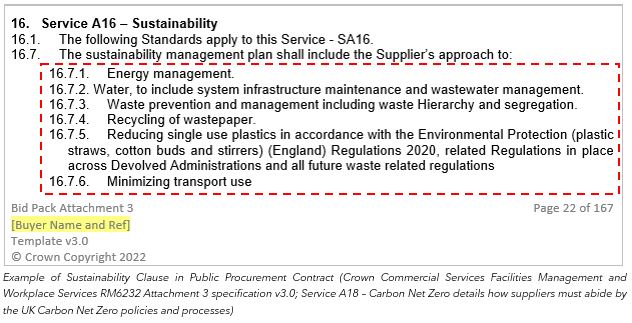
15 Oct Sustainability and Environmental Focus in Public Procurement
In a world full of turmoil due to growing environmental issues and challenges, governments worldwide are rethinking their spending habits. Public procurement, encompassing everything from office supplies to infrastructure projects, represents a staggering 12-20% of global GDP according to the Organisation for Economic Co-operation and Development (OECD). This presents a unique opportunity to leverage this economic power for positive change through the adoption of Sustainable Public Procurement (SPP) practices.
What is Sustainable Public Procurement (SPP)?
SPP goes beyond simply buying what is needed. It’s a strategic approach that encourages governments to consider the environmental impact of their purchases throughout a product’s or service’s lifecycle. It integrates environmental, governance, and social (ESG) goals into procurement, purchasing, and the supply chain and includes factors such as:
- Resource extraction and production: How much energy and water are used? Are raw materials ethically sourced and renewable?
- Product use and maintenance: Is the product energy-efficient? Does it require frequent replacement or repairs?
- End-of-life disposal: Can the product be recycled or repurposed? How much waste will it generate?
Following and implementing SPP does not necessarily mean compromising on either quality or functionality. SPP encourages stakeholders to seek solutions that are both effective as well as minimise environmental footprint, promoting long-term benefits. For example, government buildings designed with energy-efficient features such as passive ventilation and solar panels not only reduce dependence on fossil fuels and lower carbon emissions, but also save on utility bills, leading to cost savings in the long run.
SPP in Action: Global Examples and Benefits
Many countries are already reaping the rewards of SPP implementation. China, for instance, has made significant investments in green infrastructure projects like high-speed rail and electric vehicle charging networks. This improves public transportation efficiency and reduces reliance on personal vehicles, as well as stimulates innovation within the clean energy sector, fostering the development of new technologies for power generation and storage.
On the other hand, the UK prioritises the use of recycled materials and local suppliers in its procurement practices. This approach fosters a more circular economy by reducing resource consumption and waste generation, while also boosting local businesses and creating jobs within the region. Studies by the European Commission suggest that SPP can even lead to significant cost savings beyond initial investments. Reduced energy and resource consumption over the product’s lifespan can outweigh the potential slightly higher upfront cost of some sustainable options, leading to long-term financial benefits. Governments have been increasingly incorporating sustainability clauses into their contracts.

Challenges and Overcoming Hurdles
While the potential benefits of SPP are clear, there are also challenges to consider:
- Capacity Building: Procurement officers need training and resources to effectively evaluate and source sustainable alternatives. This may involve workshops, online learning modules, and access to expert databases of sustainable products and services.
- Initial Cost: Some green products and services may initially appear more expensive. However, as the demand for sustainable solutions increases and economies of scale come into play, production costs are likely to decrease over time. Additionally, lifecycle costing including factors like energy savings and reduced maintenance needs can demonstrate the long-term cost-effectiveness of sustainable options.
- Standardisation and Transparency: Clear guidelines and metrics are essential for a consistent and transparent SPP process. It includes establishing common criteria for evaluating environmental impact across different product categories and providing clear communication channels for businesses to understand government procurement priorities and expectations.
Germany has addressed some of these challenges by offering financial incentives and technical assistance to companies developing sustainable solutions. This helps bridge the initial cost gap and fosters innovation, leading to a broader range of sustainable options becoming commercially viable. Additionally, standardised evaluation frameworks ensure a fair and transparent procurement process, giving businesses a clear understanding of the criteria for success in securing government contracts.
Businesses: Partners in Sustainability
Governments are not the only stakeholders in the implementation of successful SPP. Businesses have an equally crucial role to play. By actively developing and promoting sustainable solutions, companies can position themselves competitively as preferred vendors.
For instance, a construction company could invest in developing prefabricated building modules with minimal on-site waste or explore alternative, low-carbon building materials like bamboo. These efforts directly align with SPP goals, while also creating a competitive advantage when bidding for government contracts.
Companies can further contribute by actively engaging with government agencies. Open communication facilitates a deeper understanding of specific SPP criteria and encourages collaboration on future projects. For example, a furniture manufacturer could participate in workshops organised by government agencies to discuss the latest sustainable materials and design principles for office furniture.
Additionally, partnerships with research institutions can accelerate the development of innovative solutions that meet specific public sector needs. A prime example comes from Germany’s automotive industry, where leading car manufacturers have partnered with research institutions and the government to develop next-generation electric vehicle technology. This collaborative approach positions them for future public contracts while pushing the boundaries of clean transportation.
The Road to a Sustainable Future
The transition towards a sustainable future requires a multi-pronged approach. SPP serves as a powerful tool for governments to leverage their purchasing power to drive positive environmental change. By prioritising resource efficiency, promoting innovation in clean technologies, and fostering local green economies, SPP can have a cascading effect across industries and society. It can encourage businesses and individuals to prioritise sustainability in their own operations and choices. As SPP becomes more widespread, the combined efforts of governments, businesses, and research institutions can unlock a future built on environmental responsibility, economic growth, and a thriving green economy.
Author: Shivam Agarwal
Assistant Consultant, Strategy Consulting


No Comments